Cheddar Gorge never lets me down, no matter if I wander through it under bright summer skies or in the cool, drifting mists of autumn. After exploring it in both seasons, I have to say, autumn mist just brings out something almost magical in those dramatic cliffs.
The rising fog softens the edges and wraps the whole place in a mysterious hush as I make my way along the rocky paths.
But then, summer sunshine has its own vibe. Wildflowers pop out everywhere, and the hills turn this almost surreal green. The limestone cliffs practically glow against the blue sky.

Each season shows off a different side of Cheddar Gorge. I always leave with new memories and a fresh sense of wonder.
Cheddar Gorge: Geological Wonder and Historic Heritage
Cheddar Gorge stands out for more than just its wild scenery. Beneath the surface, ancient secrets and human stories wait to be uncovered.
The towering limestone cliffs, deep caves, and prehistoric finds all tell a story of how nature and people shaped this spot over thousands of years.
Formation and Geology
I’ve always been fascinated by how Cheddar Gorge came to be. Glacial meltwater during the last Ice Age carved through the Mendip Hills, forming these steep, jagged cliffs that rise up to 400 feet.
Cheddar Gorge is actually Britain’s largest gorge. A winding river snakes along its base, and you can see ancient layers of limestone that formed under long-gone seas.
Walking the trails here, I realize I’m stepping over rocks that are hundreds of millions of years old.
The main rock here is Carboniferous limestone. That’s why the area is packed with caves and underground rivers. Water has shaped passageways and left behind some wild mineral formations.

The bold shapes and deep valleys really show off the power of nature over time.
Prehistory and Cheddar Man
Cheddar Gorge isn’t just a pretty face—it’s a link to our distant past. In 1903, explorers found Britain’s oldest complete human skeleton right here.
They called him Cheddar Man, and he lived around 9,000 to 10,000 years ago, back in the Mesolithic era.
His bones turned up in Gough’s Cave. Thanks to DNA analysis, scientists pieced together a picture of what he might have looked like—turns out, he likely had dark skin and blue eyes. That mix still amazes me.
Even older remains from the Upper Palaeolithic show that people sheltered in these caves long before Cheddar Man walked here.
You can check out some of these finds at the Museum of Prehistory, right by the gorge entrance.
Limestone Cliffs and Caves
Those limestone cliffs give Cheddar Gorge its signature look, but honestly, the hidden caves below ground are just as impressive.
Gough’s Cave and Cox’s Cave are the big names here, each filled with twisting tunnels, underground streams, and rock formations that look almost sculpted.
Inside, I spot stalactites and stalagmites—water drips down, minerals build up, and these formations slowly grow, year after year. The caves stay cool and steady all year, perfect for these natural wonders.
Gough’s Cave goes deep into the hillside, with an underground river that once shaped the whole system. Cox’s Cave is a bit smaller but packed with colorful minerals and winding passageways.
Guided tours help make sense of it all, explaining how water and time created these hidden worlds. The combo of dramatic cliffs above and mysterious caves below really makes Cheddar Gorge one of a kind.
Seasons at Cheddar Gorge: Summer Sun Versus Autumn Mist
Every season brings a new mood to Cheddar Gorge. I’ve noticed the weather, scenery, and even the wildlife shift with the months.
Seasonal Weather and Climate
Summer usually means bright, mild days—temperatures hover around 18°C to 22°C. July’s long daylight hours make everything feel more alive, and the sun lights up the limestone cliffs.
In autumn, things cool down to about 10°C to 15°C. Rain picks up, and misty mornings are common. October gets pretty soggy, honestly, but the damp air adds a moody vibe to the gorge.
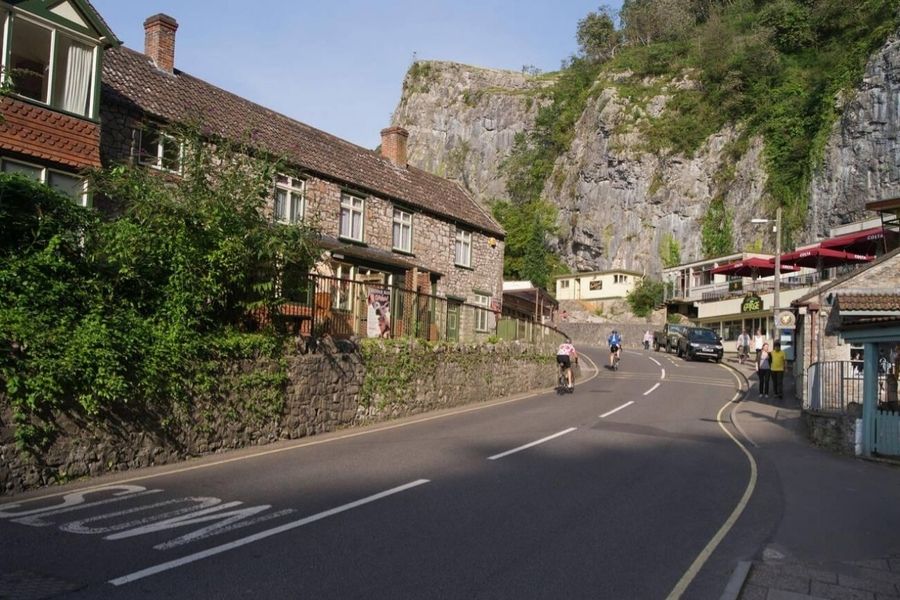
No matter when I visit, the weather shapes the whole experience. Summer dries out the trails and brings bigger crowds, while autumn’s wetness sometimes makes the stone steps slick but adds a layer of mystery.
Atmosphere and Panoramic Views
On a clear summer day, you can see for miles from the cliff tops. Sunlight brings out every detail—green woods, purple wild thyme, and limestone shining in the heat.
Autumn mornings, though, often start with thick fog drifting through the gorge. Cliffs and spires appear and vanish as the mist moves. The lower light brings deep shadows, and the whole place feels quieter, almost enchanted.
Summer is perfect for wide-open panoramas and snapping photos. Autumn, though, wraps everything in mystery and makes for some unforgettable walks.
Influence on Wildlife and Flora
Summer is prime time for wildflowers like wild thyme and the rare Cheddar pink—this is literally the only place it grows. Feral goats and Soay sheep graze the steep hills, and if I’m lucky, I’ll spot peregrine falcons soaring overhead.
Autumn brings a different scene. The wildflowers fade, but the woods get busier. Dormice and lesser horseshoe bats use the caves and woods for shelter. Wild goats huddle near the rocks when it rains.
I’ve watched bats flutter out at dusk and seen falcons change their hunting routines as daylight shortens.
The wildlife shifts with the seasons. Summer bursts with color and movement, while autumn offers quieter, but still fascinating, encounters.
Experiencing Cheddar Gorge: Outdoor Adventures
Cheddar Gorge’s high cliffs, deep ravines, and winding paths create a playground for anyone who loves the outdoors.
Nature lovers flock here to walk, climb, and soak up those sweeping Somerset views.
Hiking and Gorge Walks
Walking Cheddar Gorge, I find trails for every mood—some easy, others that’ll get your heart racing. The Gorge Walk follows the road or climbs up steep slopes.
The Clifftop Walk is a favorite, showing off both the cliffs and the countryside.
Climbing Jacob’s Ladder—a long, stone staircase—gave me a serious workout, but the views at the top made it worth it. Signs help with navigation, and there are plenty of spots to rest or snap a photo.

Benches and picnic areas pop up along the way, and shady woods offer a break from the sun or wind.
I always grab a map from the visitor center to plan my route—makes the whole thing less stressful.
Climbing and Outdoor Activities
If climbing’s your thing, Cheddar Gorge is a bit of a legend. I’ve seen climbers on the limestone faces, and there are routes for all levels. Climbing is only allowed in certain zones, so it’s good to check first.
The area also has cycling trails and open spaces for other nature activities. I always bring a light jacket—weather can change fast up here.
Safety signs are there for a reason, especially on steep ground.
Local guides offer rock climbing lessons and group adventures. Their tips made me feel a lot more confident trying new things. Booking ahead is smart, especially during busy times.
Lookout Points and Panoramic Experiences
Reaching the top, the Lookout Tower and cliff edge spots offer jaw-dropping views across the Mendip Hills.
In summer, everything looks bright and lush. Autumn paints the landscape with gold and wraps it in mist.
Here’s a quick table of the main lookouts:
| Lookout Name | Main Feature | Access |
|---|---|---|
| Jacob’s Ladder | High views, stone steps | Steep climb |
| Lookout Tower | 360° panorama | Entry fee |
| Clifftop Points | Open vistas, free walk | Path network |
Each lookout has sturdy barriers and spots to pause for photos. Info boards along the way tell more about the Gorge’s history and geology—always worth a read.
Local Culture and Village Life
Cheddar isn’t just about wild landscapes. The village itself has a gentle pace and a warm, welcoming feel.
Historic food traditions, friendly locals, and cozy places to stay all blend into the Somerset countryside.
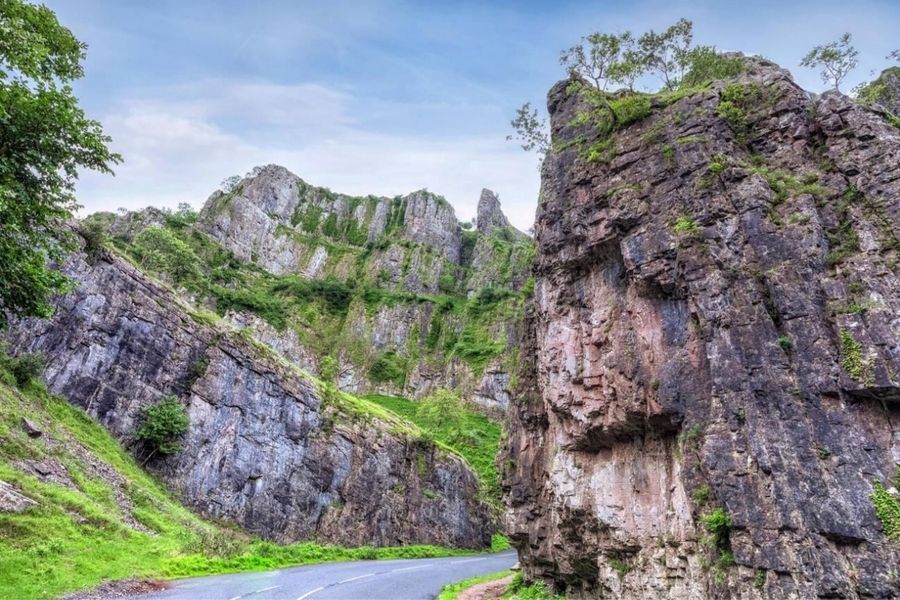
Cheddar Cheese and Culinary Traditions
Cheddar cheese was born here, and the village takes pride in it. I love wandering past family-run dairies that still make cheese from local milk.
Shops offer samples of everything from mild to vintage cheddar, and watching cheese made by hand is a treat.
Beyond cheese, you’ll find bakeries with fresh bread and cafes serving classic British snacks. Many spots feature Somerset cider, pressed from local apples.
Picnic spots and tea rooms let me slow down and savor these local flavors with a view of the gorge.
Village of Cheddar and Surroundings
Life in Cheddar village moves at its own pace, even with a steady stream of visitors. Stone cottages line the lanes, and shops sell everything from hiking gear to handmade crafts.
Community events—like fairs and cheese tastings—bring everyone together.
A short walk from the village center leads straight into the wild cliffs and rolling hills of Cheddar Gorge. Public buses and day tours bring in travelers from all over, making the village feel lively and open.
Accommodation and Hospitality
Cheddar has plenty of places to stay, whether you’re here for a night or a week. Bed and breakfasts with views of the gorge or village rooftops are easy to find.
Small hotels, guesthouses, and campsites dot the area, and the hosts are always happy to share tips.
Some places sit right by the main trails, so it’s simple to set out for a day hike. Local buses and taxis make it possible to get around without a car.
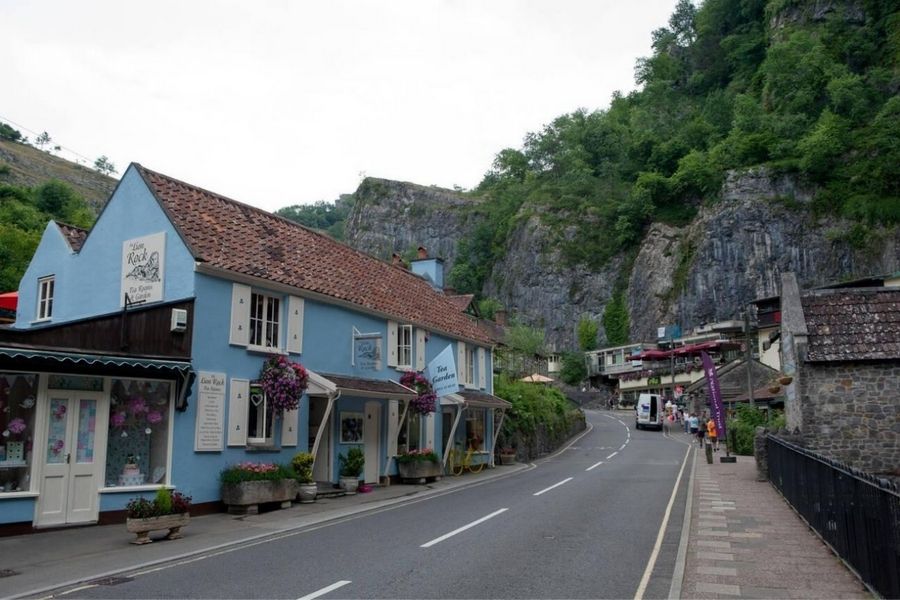
The focus here is on comfort and local charm—every stay feels memorable.
Nature Conservation and Responsible Exploration
Cheddar Gorge is one of the UK’s most unique natural spots. Its steep cliffs, rare wildlife, and ancient caves draw in crowds every year.
Protecting this place takes effort from all of us, visitors included.
Protected Areas and the National Trust
Cheddar Gorge sits within the Mendip Hills Area of Outstanding Natural Beauty (AONB). The National Trust manages big sections of the land, working to protect habitats, help local wildlife, and keep access open.
They map out walking routes and clearly mark fragile areas to balance nature with recreation.
Much of the gorge is a nature reserve or protected zone, shielding rare plants, limestone grasslands, and old woods from harm.
The National Trust keeps up the trails, puts up info boards, and leads guided walks. They also restore worn paths and fence off delicate ground to stop accidental damage.
Conservation here isn’t just about following rules—it’s about caring for the land so future visitors can enjoy it too.
Flora, Fauna and Conservation Efforts
When I first wandered through the gorge, I couldn’t help but marvel at the wildlife. You’ll spot Cheddar pink flowers, dormice darting about, and bats roosting deep in the caves. Rare butterflies and birds nest along those dramatic cliff faces too.
Keeping this biodiversity alive? That’s no small feat. Conservationists here work year-round—they track species, battle invasive plants, and bring wildflower meadows back to life. Sheep and goats graze the slopes, munching away at scrub so rare flowers and grasslands can thrive.
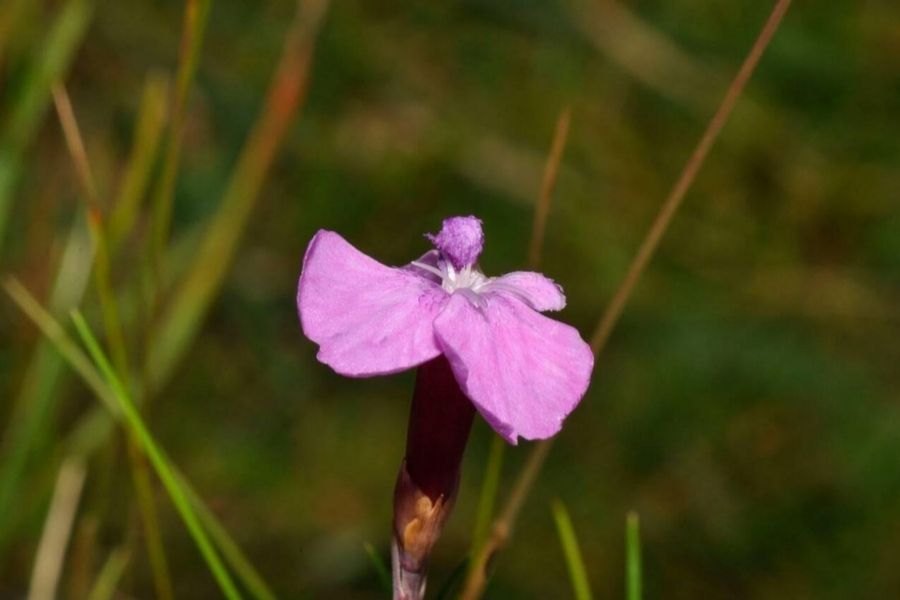
I’ve realized how important it is to stick to marked paths. It’s so easy to harm delicate plants or disturb tiny creatures just by wandering off-trail. There’s always more to learn, and volunteer programs really help people get involved or understand how conservation tactics change over time.
Responsible Tourism and Leave No Trace
Whenever I plan a visit, I try to keep the gorge’s fragile beauty in mind. Following Leave No Trace principles isn’t just a good idea—it’s essential here. I always pack out my rubbish, leave the flowers alone, and try to keep things quiet.
If it’s busy, I’ll seek out quieter paths to give nature (and myself) some breathing room. I keep dogs on leads, mostly to protect both wildlife and the sheep grazing nearby. Even simple things—like not feeding wild animals—can make a surprising difference.
The National Trust and local partners share loads of advice and handy maps for exploring safely. Staying up to date means I can enjoy Cheddar Gorge without adding to its challenges.
Beyond the Gorge: Exploring the Surrounding Region
Cheddar Gorge sits in the heart of a landscape that’s packed with natural wonders and quirky local spots. I’ve found more than a few places nearby that are well worth a detour, each promising a different slice of Somerset adventure.
Cheddar Reservoir and Outdoor Activities
Cheddar Reservoir is just a short stroll from the gorge, and honestly, it’s a lovely change of pace. Loads of folks come here for walking, birdwatching, and watersports. The circular path around the reservoir is flat and easy, so pretty much anyone can enjoy it.
I’ve watched people sailing, fishing, and even paddleboarding out on the water. The views across the reservoir toward the Mendip Hills are surprisingly peaceful. If you keep your eyes open, you’ll spot swans, ducks, and the occasional heron along the shore.
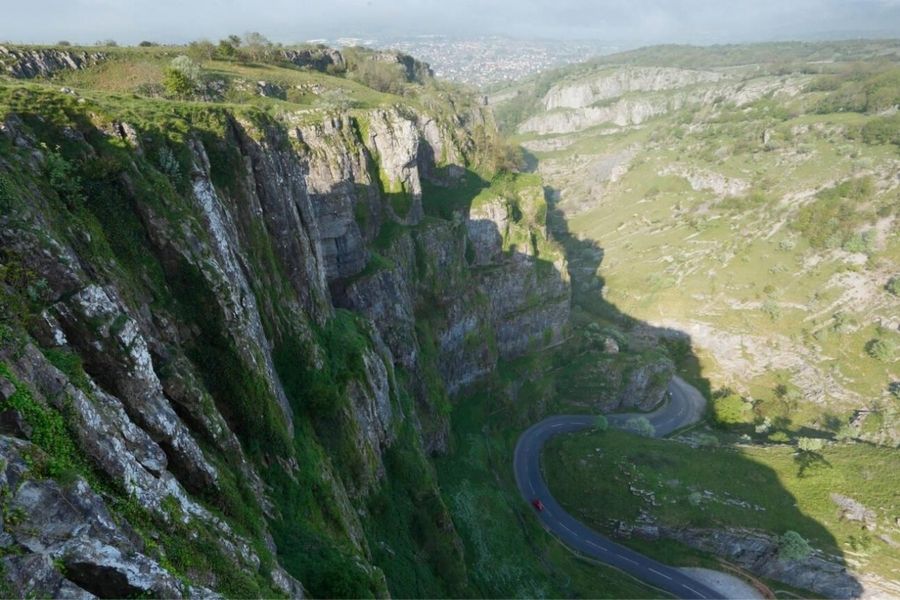
Picnic tables dot the path, which makes it a favorite for families. Dogs are welcome, as long as they’re on leads. And if you’re around in the evening, sunsets over the hills can be spectacular.
Black Rock Quarry and Mendip Hills
Black Rock Quarry sits quietly on the edge of Cheddar Gorge—a bit of a hidden gem, honestly. If you love geology, it’s a treat to see the exposed limestone layers and all those weird rock formations up close.
The Mendip Hills roll out beyond the quarry, offering miles of trails for walking or cycling. The National Trust manages the area, and you’ll find plenty of signposted routes whether you’re a newbie or after a bigger challenge. If you climb to the top, the views across Somerset really open up.
I like that it’s quieter here than down in the gorge, but just as beautiful. Rabbits and kestrels are common sights, and the fresh air is a welcome change. It’s easy to lose track of time and spend half a day just wandering around.
Nearby Attractions and Day Trips
When I wanted a break from nature, I found plenty of options for day trips. The Longleat Estate sits about 45 minutes away by car and serves up a mix of safari park fun, a grand historic house, and gardens that feel straight out of a storybook.
I’ve heard from families that the drive-through safari is the real showstopper. I’d have to agree—there’s just something about seeing animals up close from your own car that feels a bit wild.
Wells, a nearby village, has its own charm. The cathedral towers over the market square, and there’s usually something happening there.
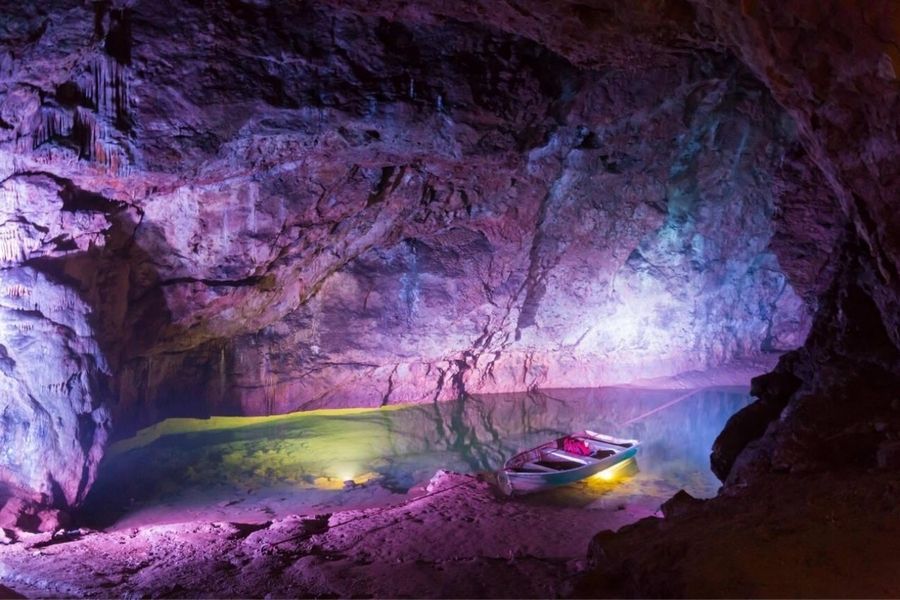
If you’re up for a little underground adventure, Wookey Hole Caves isn’t far either. I remember wandering through those echoing chambers—definitely a different side of Somerset.
On slower days, I like to pop into local farm shops or cozy cafes. The Cheddar cheese here? Absolutely worth it.
These little stops let me taste Somerset’s food scene and soak up a bit of local culture—always a highlight for me.

